| |
|
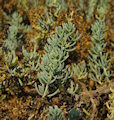 | |
| MaltaWildPlants.com by Stephen Mifsud |

|
| |
|
|
 |  |  |  |
| External Links: |
|
Acanthus mollis (Bear's Breech) |
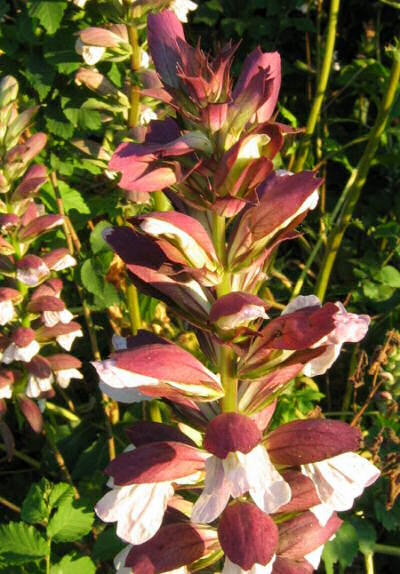
Acanthus mollis (ACANTHACEAE.)
Images for this profile are taken from the Maltese Islands after year 2000. |
|
| Nomenclature |
Species name : | Acanthus mollis L. | Authority : | Carl von Linne, Sweden, (1707 - 1778) | Synonyms :
(basionym or principal syn.) |
|
Plant Family : | Acanthaceae Juss.
(Acanthus Family) | English name(s) : | Bear's Breech, Artists's Acanthus, Oyster plant | Maltese name(s) : | Ħannewija | Status for Malta : | Indigenous. Present on the Maltese islands before man | Name Derivation : |
Acanthus: from 'aka' and 'anthos' meaning spiny and flower respectively and latinized to Acanthus - exchange of the consonant K to C since the former is not found in Latin alphabet. (Greek origin ); 2 = From "Aca" which means thorn or spine and "Anthus" which means flowers referring to the spines or hard bristles found on the sepals of the flowers (the petals are spineless). (Greek origin );
mollis: Soft or smooth. (Latin origin ); 2 = Swaying, pliant, flexible or flacid all referring to the soft leaves. (Latin origin );
| Remarks : | |
|
| Morphology and structure |
PLANT STRUCTURE: |
Character | Growth Form | Branching | Surface |
Description | | | |
General
Picture |  |  |  |
|
LEAVES: |
Character | Arrangement | Attachment | Venation |
Description | | | |
General
Picture |  | 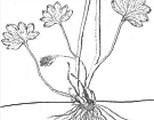 |  |
| |
Character | Leaf Shape | Leaf Margin | Remarks |
Description | | | |
General
Picture |  |  |  |
|
FLOWERS: |
Character | Colour | Basic Flower Type | No. of Petals | No. of Sepals |
Description | White tinged with pink or lilac. The upper and large sepal is maroon. | | 1 | 4 (2 are very small and inconspicuous). |
General
Picture | | 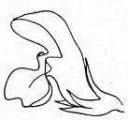 |  |  |
| |
Character | Inflorescence | Description | Ovary | Stamens |
Description | | The flower consists of a spiny toothed bract, 4 sepals (1 lower, 3 upper) and one labiate white petal with 3 lobes. The large upper sepal is hood shaped and purple in colour. The whole has a large tube-like structure. Inside there are 4 large stamens, with their bristly anthers touching each other and a single style above the stamens. | | |
General
Picture |  |  | 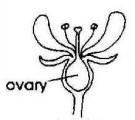 |  |
| |
Character | Scent | Average Flower Size | Pollen Colour | Other Notes |
Description | YES The flower emits an offensive smell. | 20mm x 40mm x 55mm (Length x breadth x height). | Mustard yellow | - |
|
SEEDS: |
Character | No. Per Fruit | Shape | Size | Colour |
Description | 16-32 | Flattened oval | 8 - 10mm | Dark Brown |
General
Picture |  |  |  |  |
|
FRUIT AND OTHER BOTANICAL DATA: |
Character | Fruit Type | Colour of Fruit | Subterranean Parts | Other Notes |
Description | | Green Turns beige when it ripens. | | - |
General
Picture | 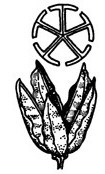 |  | 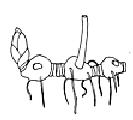 |  |
|
|
| Plant description and characters | |
Life Cycle: | Perennial. |
Growth Form: | HEMICRYPTOPHYTE (prostate plants with flowers close to the ground) |
Habitat: | Shaded and sheltered areas especially behind walls close to water streams, or understory under reeds in many valleys. |
Frequency: | Common |
Localities in Malta: | Examples include Buskett woodlands, Fiddien, Wardija, Wied Babu, Wied Anglu, Wied Girgenti. Found in such habitats throughout Malta and seems to be increasing. |
Plant Height: | 50 - 180cm. |
| May-Jun |
Poison: | |
A perennial rhizomatous plant often with leaves all year round or drops them in Summer when exposed to sunlight. The plant forms a rosette of leaves and does not have a true erect stem, but it produced a tall thick flowering stem in SPring. The true stem is a resilient short and stubby rhizome which lies horizontally under ground level. Occasionally mature flower stalks produce small pairs of leaves at the base. The erect flower stalks can reach over 1 metre high.
The leaves are also long and can reach over a metre in length, usually arcuate (bending down) and with a fairly long petiole.
The shape of the leaf is very elegant with its symmetrically lobed outline forming opposite angular lobes. The lower lobes are the largest and divided upto the rachis (midrib). The leaf lobes themselves are often lobed or with a dentate margin forming a bilaterally symmetrical leaf. Another feature that contributes to the leaf elegancy is the smooth, soft texture lacking bristles or spines. The species name 'mollis' (= soft) is given for the leaf texture.
The numerous flowers grow along the upright flower stalk as a medium-dense spike. A normal spike of 60cm length can produce 100 -120 flowers. Each flower is bilaterally symmetrical and measures roughly 2cm long x 4cm wide x 5cm deep. The perianth is made of 4 different sepals and one three-lobed petal. The bract is closely associated with the flower and is rounded with opposite spiny teeth - these being the only spines which can be found in the whole plant.
The flower consists of 4 sepals - one lower and 3 superior. They are green at the base which that turn to purple-brown on the external part. Only the upper central sepal is conspicuous because the lateral sepals are very small and the lower one is covered by the bract and barely seen. Contrasting with the dark sepals is the single lip-shaped modified petal with a white often flushed at the margin with a lavender or lilac flush. It is divided into 3 wide, shallow lobes. When the flower blooms, the petal hardens but does not wither (becoming like 'paper') and so the flowers remain white and in good shape for many days.
Inside the flower, and slightly visible from the exterior are the four stamens which are quite large and bulky. They are of equal length and arranged in a way that the 4 anthers are touching each other laterally. Each stamen has a twisted or bent, thick filament and a brown semi-eliptic anther which has many fine white wooly bristles at one end from where the mustard-yellow pollen is liberated. The pistil consists of an inferior globular ovary, and a green style which passes just above the stamens. The stigma is indented into 2 tiny tips.
The ovules develop inside the fruit capsule that grows quite large, about 3cm x 2cm. The fruit is glabrous - sometimes shiny, lemon shaped and has a green colour. With maturity, the fruit hardens up and when ripe enough it breaks with an explosive dehiscence and ejects out the dark reddish brown seeds away to a considerable distance. The seeds have a hard, slightly wrinkled seed coat and their shape is oval and flattened. If the seeds are unsuccessful, the plant grows again from the extensive underground roots which are difficult to eradicate.
|
|
| Information, uses and other details |
Origin and Nativity
The plant is believed to have originated from southwest Europe [WWW-14] and now is Native across North Africa (eg: Algeria, Morocco, Tunisia), Western Asia (eg Turkey, Syria) and South and South-Eest of Europe ( Yugoslavia, Spain, France, Italy Sicily, etc) [WWW-26] . Naturalised in Britain in W. Cornwall [17]
Medicinal Uses
The plant has the following medicinal properties: [7, 61, 254, WWW-66] .
| Anti diarrheic |
used to control or stop diarrhoea (frequent discharge of loose or fluid evacuations from the intestines) [WWW-32] |
| Astringent |
Causes shrinkage and drying of surface membranes when applied topically
. [271] |
| Depurative |
An agent which is able of Purifying the blood or the humours (body fluids) [WWW-32] |
| Detergent |
a medicine used to cleanse wounds, ulcers,
etc.
[WWW-32] < /td>
|
| Emollient |
substances resembling cream that have a soothing and moisturising effect when applied to the skin. [WWW-32] |
| Expectorant |
used to induce the ejection of mucus, phlegm, and other fluids from the lungs and air passages by coughing or spitting. [WWW-32] |
| Stimulant |
Produces a temporary increase of vital activity in the organism, or in any of
its parts; [WWW-32] |
| Stomachic |
A medicine that strengthens the stomach and excites its
action. [WWW-32] |
| Vulnerary |
Useful in healing wounds; adapted to the cure of external
injuries; [WWW-32] |
The plant contains appreciable quantities of mucilage and tannin. Traditionally it was used as a treatment for dislocated joints and for burns. A paste made from the plant, when applied to a dislocated joint, tends to normalise the affected muscles and ligaments, simultaneously relaxing and tightening them to encourage the joint back into its proper place [254] . The crushed leaves have been used as a poultice to soothe burns and scalds [268] . For internal use, the plant's emollient properties are useful in treating irritated mucous membranes within the digestive and urinary tracts [254] .
Other Uses
The sub-species A. mollis latifolia makes a good ground cover plant [208] . Relatively slow to cover the ground at first but it can eventually become invasive [197] .
Cultivation details
Prefers a deep loamy soil in a sheltered position in full sun [1] but tolerates partial shade [31, 111] . Grows well in heavy clay soils if they are well-drained but dislikes heavy damp soils [111] and will not overwinter in wet soils [200] . Established plants are fairly drought tolerant [190] .
Hardy to about -15 °C [187] , though young plants may require protection in the winter [190] and even older ones may need protection in cold winters [111] .
A very ornamental plant [1] . The leaves can wilt on hot summer days when plants are grown in full sun [190] . Plants can become invasive [197] , spreading by suckers, and they are difficult to eradicate due to their deep roots [190] . Does well in the lawn or wild garden [111] . Plants can be grown in quite coarse grass, which can be cut in the autumn [233] .
Members of this genus are not usually browsed by deer [233] .
Propagation Details
From Seed: - sow spring in a cold frame [133, 200] or outside as soon as the seed is ripe [133] . It usually germinates in 3 - 4 weeks at 10 °C [133] . When they are large enough to handle, prick the seedlings out into individual pots and grow them on for two years before planting out in late spring or early summer [200, KF] .
A further hint for more successful growth from seeds is found in reference [WWW-67] :
" Scratch seed with a nail and then soak in warm water for three days, changing the water every eight hours with fresh warm water. Sow by covering the seed completely, darkness needed for best results, germination is often in 10 days at 70 F but can be spread-out over a few months too. This depends on how fresh the seeds are, new seeds take a long time to germinate and old seed is happy to germinate quicker. One can also leave the seeds out to dry for a few weeks before soaking. "
Division in spring or autumn [111, 200] . Very easy, they can be planted straight out into their permanent positions.
From root cuttings: - winter in a cold frame [111, 200] .
Relationship between Acanthus and the Corinthians
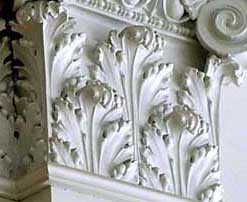 It is a well known fact that Leaves of Acanthus species namely A. mollis is used in architecture as ornamentation in the capitals (upper extremity of a column). The Corinthian order was one of the Classical orders of Greek and Roman architecture, although it was seldom used in Greek architecture. The other two orders were the Doric and the Ionic. (When classical architecture was revived, two more orders were added to the canon, the Tuscan order and the Composite order.) [WWW-69] .
It is a well known fact that Leaves of Acanthus species namely A. mollis is used in architecture as ornamentation in the capitals (upper extremity of a column). The Corinthian order was one of the Classical orders of Greek and Roman architecture, although it was seldom used in Greek architecture. The other two orders were the Doric and the Ionic. (When classical architecture was revived, two more orders were added to the canon, the Tuscan order and the Composite order.) [WWW-69] .
Click below for examples of Greek architecture by Corinthians with depictions of the Acanthus leaves:
The Corinthians made the most elaborate column of all other orders, with a much taller capital that showed acanthus leaves appearing to sprout from the column. The Pantheon in Rome offers fine examples of Corinthian columns. [WWW-70]
Apparently acanthus plant motifs appear extensively in Medieval, Renaissance artwork, particularly in sculpture and wood carving and in friezes. In architecture the frieze is the vertical part of an entablature, whether plain or decorated with bas-reliefs. It lies upon the architrave ('main beam') and is capped by the moldings of the cornice. In a looser sense, the frieze of a room is the section of wall above the picture rail under the crown moldings or cornice. By extension, a frieze is a long band of painted or modelled decoration in such a position, above eye-level.
History about the Corinthians and the Acanthus leaves
This citation [WWW-68] reports about the incidence of how Corinthians used the acanthus leaves in their architecture:
" The third order, which is called Corinthian, imitates the slight figure of a maiden; because girls are represented with slighter dimensions because of their tender age, and admit of more graceful effects in ornament.
Now the first invention of that capital is related to have happened thus. A girl, a native of Corinth, already of age to be married, was attacked by a disease and died. After her funeral, the goblets which delighted her when living, were put together in a basket by her nurse, carried to the monument, and placed on the top. So that they might remain longer, exposed as they were to the weather, she covered the basket with a tile. As it happened the basket was placed upon the root of an acanthus. Meanwhile about spring time, the root of the acanthus, being pressed down in the middle by the weight, put forth leaves and shoots. The shoots grew up the sides of the basket, and, being pressed down at the angles by the force of the weight of the tile, were compelled to form the curves of volutes at the extreme parts.
Then Callimachus, who for the elegance and refinement of his marble carving was nick-named catatechnos by the Athenians, was passing the monument, perceived the basket and the young leaves growing up. Pleased with the style and novelty of the grouping, he made columns for the Corinthians on this model and fixed the proportions. Thence he distributed the details of the Corinthian order throughout the work "
from: A Certain "Remarkable Circumstance" by
Vitruvius, On Architecture, (ca. 30 B.C.E.). Book IV, Chapter 1.
Personal Observations
Some morphological differences observed
Usually, and as described by many botanists, the flowering stalk does not branch and it just forms numerous flowers in form of a long spike. However there are some species or variants which are able to form few and simple flower branches from the main flower stalk. Sometimes such variants also form few stalked leaves (smaller than the normal ones) that grow in opposite directions. These features would make the 'flowering stalk' be defined as a stem, since it branches smaller flowering stalks and leaves [SM]
Another different feature is the plant height. This plant is usually described to reach a maximum of 120cm. Actually this is true for many plants but a few plants having a flowering stalk reaching 200cm in length were observed in Malta. Click here to see a photo with a plant taller than myself (172cm). This abnormal height is probably contributed by the habitat factors namely sunshine, water availability and soil nutrients
[SM]
Long life of the flowers in situ and in vitro
A little after the blooming of the flower, the petal's texture changes from a soft one to a harsh and dry one - maintaining fully its shape and colour. In fact, when touching the petal, it feels as touching a dry paper rather than something smooth and 'fresh'. Thanks to this feature the petals persists on the plant for a long time and so, since the old lower flowers do not wither and drop down, long whitish flowering spikes are produced. Additionally, this plant is ideal to put in a vase because the flower spikes remain erect and keep producing flowers for at least 10 days, and as just described, the individual flowers do not wither and fall. [SM]
|
|
| Links & Further literature
(0 papers) |

Google Web |

Google Images |

Google Scholar |

Research Gate |

Wikipedia |

JSTOR |

GBIF |

Med Checklist |

Cat. of Life |

EoL |

IPNI |

World Flora Online |

Plants of the World Online |

Vienna Virt. Herb. |

RBGE Herbarium |

KEW Herbarium |

MNHN |

Arkive |

IUCN |

CABI |
Kindly Email if there are papers and publications about local
studies or information about this species to be included in the list above.
|
| Photo Gallery (42 Images) |  |
 |
 |
 |
IMAGE: ACNMO-01 Photo of flowers in situ. The individual flowers are sessile and so the inflorescence is described as a spike. |
IMAGE: ACNMO-02 Photo of the flowering spike, consisting of several stacks of white- lipped flowers. |
IMAGE: ACNMO-03 Photo of upper part of flowering spike. |
IMAGE: ACNMO-04 Photo of individual flowers which consists of a white labellum and purple brown sepals. |
 |
 |
 |
 |
IMAGE: ACNMO-05 Photo of individual flowers showing some of its internal parts, namely the large stamens. |
IMAGE: ACNMO-06 Photo of individual young flowers with the petal still pleated. The colour of the petal is white and often with a touch of lavender / lilac tips or veins. |
IMAGE: ACNMO-07 Photo of flowers from an upper view showing clearly the 3 lobes of the labellum and elongated hood-shaped upper sepal. |
IMAGE: ACNMO-08 Close up photo of flower showing the large anthers and to some extent the conspicuous thick filaments. |
 |
 |
 |
 |
IMAGE: ACNMO-09 Close up photo of flower showing one of the 2 pairs of stamen with their large anthers touching each other. |
IMAGE: ACNMO-10 Photo of buds at the apex of the flower spike. |
IMAGE: ACNMO-11 Photo of buds (top view). |
IMAGE: ACNMO-12 Scanned image of buds which have the single white petal pleated in a shape of a flattened closed cylinder. The lateral flap-like lobes will open sideways when the flower blooms. |
 |
 |
 |
 |
IMAGE: ACNMO-13 Scanned and annotated image of flower with the upper sepal folded backwards to show the internal parts. |
IMAGE: ACNMO-14 Scanned image of flower with upper sepals removed to show the arrangement of the 4 stamens. These have the anthers touching and facing opposite each other. The stamens' filaments (especially the lower ones) are bent/coiled. |
IMAGE: ACNMO-15 Anatomy of a complete flower. All the flower parts are dissected and are arranged in the flower as indicated. It consists of 1 toothed bract, 4 sepals (2 are very small), 1 labellum (petal) , 4 stamens and a central carpel. |
IMAGE: ACNMO-16 Scanned image of the sepals and 3-lobed white labellum with a lavender tip. The sepals are green, with conspicuous veins and gets purple towards the outer part. |
 |
 |
 |
 |
IMAGE: ACNMO-17 Scanned image of the 4 stamens and green pistil. The filaments are thick, beige, and coiled while the anthers are, brown, large and flat, with yellow pollen liberated from one side of the anther, where there is a brush of fine white bristles. |
IMAGE: ACNMO-18 Scanned image of the bract, which is oval shaped and have oppositely arranged, spiny teeth along the outline. This is the only part of the whole plant which has spines. The bracts also have a conspicuous green veins. |
IMAGE: ACNMO-19 Photo of opposite bracts on the base of a flowering stem. |
IMAGE: ACNMO-20 Coloured illustration of the plant taken from www.fuerstenhaus.li. |
 |
 |
 |
 |
IMAGE: ACNMO-21 Photo of leaf in situ. These can have very long stalks and can reach lengths up to 50cm. The whole length of the leaf (including stalk) can be up to 1 metre. |
IMAGE: ACNMO-22 Photo of leaf having its characteristic oppositely running deep lobes, themselves having a lobed or shallow-dentate outline. The lower lobes reach to the midrib, making them appear as independant leaflets. |
IMAGE: ACNMO-23 Photo of 2 large leaves lying on the ground. The mature leaves grow large and have long stalks. as a result, they bend down and rest lying on the ground. |
IMAGE: ACNMO-24 Scanned image of leaf (stalk partially cut out). The texture of the leaf is particularly soft and smooth. That's why plant is given the species name 'mollis' which means soft. |
 |
 |
 |
 |
IMAGE: ACNMO-25 Scanned image of one lobe of the leaf, itself also being lobed. |
IMAGE: ACNMO-26 Plenty of long, bent stalks growing from the same spot, where the underground stem is located. |
IMAGE: ACNMO-27 Photo of a portion of the underground stem which gives rise to several stalked leaves and flowering spikes. |
IMAGE: ACNMO-28 Photo of the lower part of an adult flowering spike, forming green lemon-shaped fruit capsules. These grow up around 3 cm in length and when ripe they burst open and expel the reddish brown seeds away. |
 |
 |
 |
 |
IMAGE: ACNMO-29 Close up photo of a fruit capsule, still bearing the long style. The capsule is lemon shaped and glabrous (even shiny). |
IMAGE: ACNMO-30 Photo of flower and one of its most common pollinators - this large black bee. |
IMAGE: ACNMO-31 Photo of flower and a large bee which pollinates the flowers frequently. Other smaller bees which struggle and manage to enter the flower may find it impossible to get back out and remain trapped to death inside the flower. |
IMAGE: ACNMO-32 Flowering spikes can reach very long heights. As seen in this example. The flower spike beside me may measure up to 200cm. |
 |
 |
 |
 |
IMAGE: ACNMO-33 Photo of a typical plant - drooping long-stalked, large leaves and numerous flowering spikes of different lengths. |
IMAGE: ACNMO-34 Photo of some plants near fields at Qattara (limits of Rabat). |
IMAGE: ACNMO-35 Photo of several flowering spikes. |
IMAGE: ACNMO-36 Photo of some plants besides some fallen limestone rocks. Since these plants like shade, they are often found under trees. |
 |
 |
 |
 |
IMAGE: ACNMO-37 Habitat of the plant. This photo taken at Buskett Gardens where there are plenty of these plants at the end of Spring. |
IMAGE: ACNMO-38 Photo of some plants near fields at Qattara, limits of Rabat (May04). |
IMAGE: ACNMO-39 Numerous plants photographed in Mid May 2011. |
IMAGE: ACNMO-40 A large population of Acanthus mollis, which can become invasive and a nuisance to farmers. |
 |
 |
| | IMAGE: ACNMO-41 Scanned image of seeds. They have a flattened oval or circular shape, Their seed coat is often wrinkled but it can be also smooth. The colour is reddish brown. |
IMAGE: ACNMO-42 Magnified image of pollen under microscope. They are oval (pod shaped) and have 3 longitudinal grooves. Picture taken from Flora apistica della Sicilia (by Prof. Nunzio Longhitano). |
IMAGE: ACNMO-43 |
IMAGE: ACNMO-44 |
|
| | |

